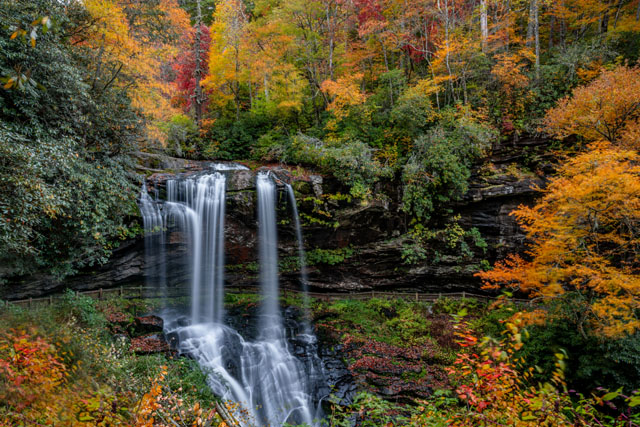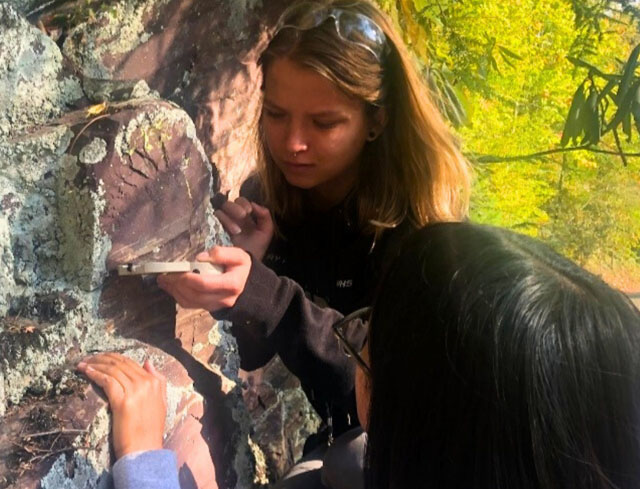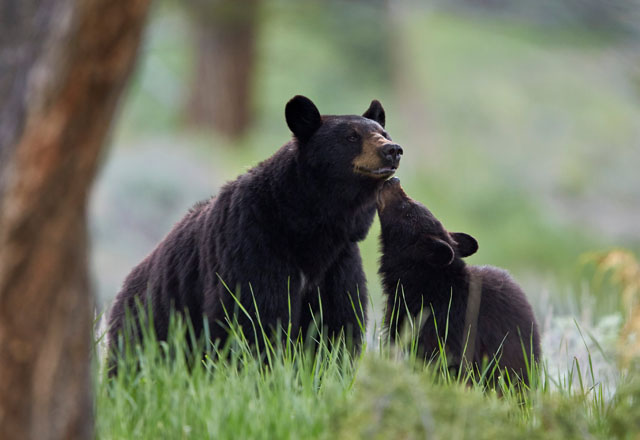The Annual Pilgrimage
05 Oct 2024
Making the trek to view one of the world's most spectacular leaf change seasons
By BRENDON VOELKER

Autumn is upon us. Maple trees, sycamores, and birch transition in color, and the rest of the forest follows along like a symphony performed in Carnegie Hall. Familiar colors and smells remind us that change is in the air, and the plateau is changing dramatically from its lush green summer palette to a burst of color so vivid it attracts thousands of “leaf peepers” each year as predictably as one season follows the next.
North Carolina's unique geography, with elevations ranging from 1,000 feet in upstate South Carolina to Mount Mitchell’s 6,700-foot peak, sets the stage for a diverse and spectacular fall foliage experience. The Appalachian Mountains, particularly eastern North Carolina, are arguably the most stunning place on the East Coast to witness the vibrant colors of autumn.
As we go to press in early September, the unknown variables that help predict when and how vibrant leaf change will be have yet to happen. Rainfall, wind, and temperature make some years more vibrant than others. An early freeze can cause trees to drop their leaves prematurely, while intense storms may wisp away peak colors on the mountain ash and oak. We are not past hurricane season, and the chance that a storm coming out of the gulf sends tropical storm-force winds at any time through October is a reality. We all hope and pray for a warm, sunny September with cool evenings and overnight temperatures above freezing. Warmth produces high sugar content in the leaves, and bright days create anthocyanin pigments that promise brilliant red, purple and crimson leaves. Our yellow and gold leaves are less susceptible to weather and remain more consistent from year to year.
The highest peaks, many on the Blue Ridge Parkway, can begin as early as the last week of September. Destinations include Richland Balsam, Black Balsam, Mount Mitchell, Grandfather Mountain, and other higher peaks within the Great Smoky Mountains National Park. These peaks hover around 6,000 feet above sea level and offer sweeping panoramas of the Blue Ridge Mountains. Even outside of the peak leaf season, the view from these mountaintops is a sight to behold. The Parkway is a narrow two-lane drive at this elevation that demands your attention. The maximum speed limit is 45 mph, which is often slower due to traffic and road conditions. Many of the parking lots at pullouts and trailheads fill up quickly, so planning an early start to your day is advisable to beat the crowd. Patience is key, as waiting for an open parking space may take a few minutes.
Those who live on or visit the plateau can expect leaf change to begin in full force from early to mid-October. Highlands and Scaly Mountain, at about 4800 feet, are a week to ten days ahead of Cashiers, Glenville and Lake Toxaway, which are 1000 feet or so lower. The drive on US Highway 64 between Cashiers and Highlands is a leaf-change delight, with no two days being the same. The same road, heading east from the Cashiers crossroads to Toxaway, is every bit as beautiful.
Another favorite drive is from Glenville to Franklin along Pinecreek and Walnut Creek roads. Rolling hills ringed with fall color and winding roads through dense mountain forests are a photography extravaganza. And, if you can jump on a boat and explore one of the area's lakes or walk along a river, leaf change reflected on the water is a photographer's dream.
One of the most spectacular drives for viewing fall colors follows the Cullasaja Gorge on US Hwy 64 between Highlands and Franklin. This drive is intriguing at any time of year, but fall is especially gorgeous. The narrow road winds and twists through hairpin curves down the mountain, following the magnificent Cullasaja River on its ancient path. Be sure to make time for a stop at Dry Falls, which is anything but dry. It offers restrooms and ADA parking. There are three other waterfalls on this route as well; Cullasaja Falls, Bust Your Butt Falls and Bridal Veil Falls. Each offers an excellent opportunity to get out of the car, stretch your legs and enjoy the sounds and aromas that accompany autumn in the Blue Ridge Mountains.
Drives up to or down from the plateau demonstrate the march of leaf change over the weeks. Lower elevations are the last to change, so when colors on the plateau fade to brown, a quick drive down Highway 107 to Sylva from Cashiers makes it feel like it is starting all over again.
Perhaps one of the area’s most beloved fall leaf-change traditions is a hike up Whiteside Mountain to stand atop its 1000-foot cliffs, overlooking the headwaters of the Savannah River. This sweeping vista, with long-range views of Georgia and South Carolina at many elevations, is awash in fall color throughout the season. People flock to the trail just off Highway 107 between Highlands and Cashiers. Parking is limited and very crowded during leaf season, which may involve waiting for a spot to open. It is worth it.
Shadow of the Bear is the highlight of the leaf-change season on Whiteside Mountain. It is visible for only a couple of weeks each spring and fall. Catching the bear is a must if you are on the plateau from mid-October through early November. Pick a clear day, as the sun must shine for this natural phenomenon to appear. It can be seen from US Highway 64 at Rhodes Big View Overlook, but finding roadside parking there is a challenge. If you can be dropped off at the National Forest trailhead to Whiteside, it is probably the easiest and most reliable way to participate in this mountain ritual. The 2-mile hike up to the cliffs is moderately strenuous, so allow a couple of hours so that you are sure to be there during the brief, 30–45-minute appearance beginning at 5:30 pm when the bear’s shadow slowly walks across the slopes below as the sun sets behind Whiteside Mountain.
You can also see Shadow of the Bear in mid-February and early March, though reaching the cliffs of Whiteside Mountain is only suitable for experienced hikers with advanced gear. Since leaf change is long past and spring’s leafing out season has yet to come, finding a spot on the highway is much easier.
Overall, a few days on the plateau with some side trips down the mountain are an excellent way to enjoy North Carolina’s world-class leaf change season. Surrounded by miles and miles of national forest and dotted with charming mountain villages in every direction, it makes for a fall vacation destination unlike any other.













